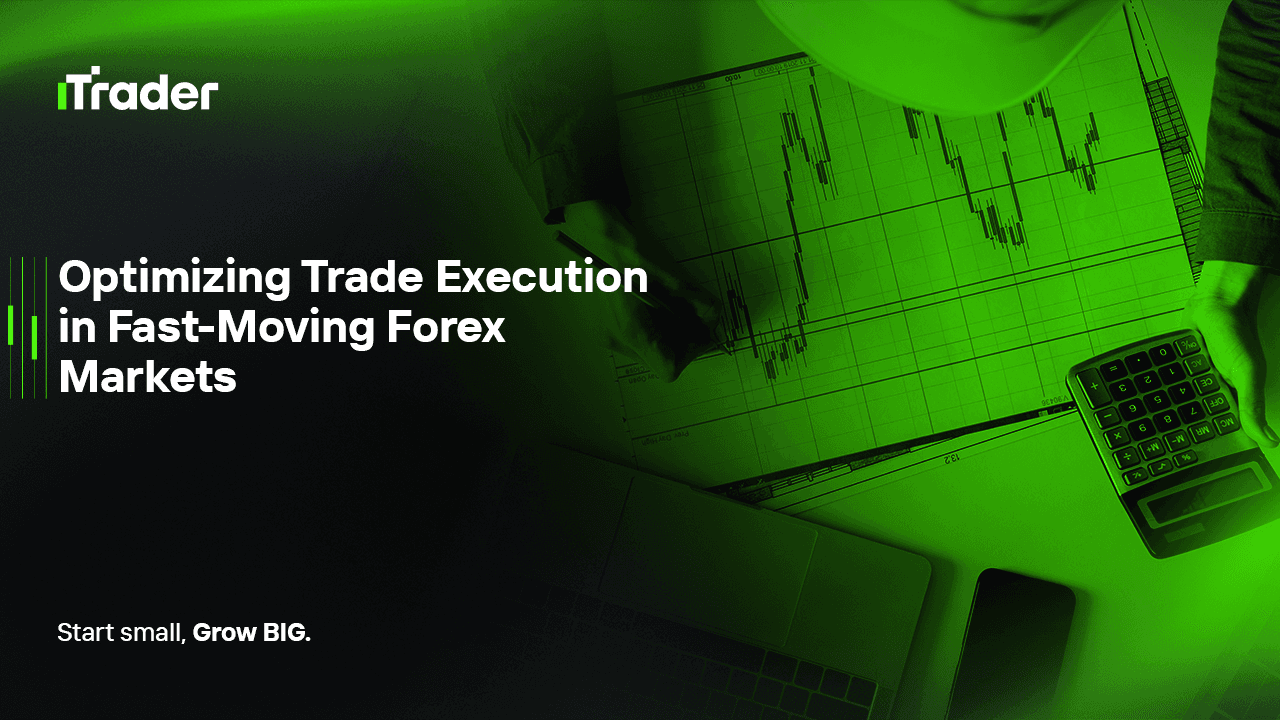2025-07-28
In algorithm-dominated financial world, speed is a strategic edge. But speed alone is not enough. Especially in fast-moving market environments, prop traders face intensified risks such as slippage, delayed execution, emotional overtrading, and microstructural traps. Without optimization, even well-researched strategies fail under sudden volatility. This article provides actionable frameworks for prop traders to optimize their execution and risk performance during fast-paced market conditions.

AI Summary
Fast-moving markets expose traders to execution delays, slippage, and rapid volatility changes that can erode performance. For prop traders, optimizing trading systems for latency, using pre-execution logic, dynamic risk adjustment, and modular trade management is essential. This article outlines how to remain efficient, composed, and strategically adaptive in high-velocity market conditions, especially during economic news, low-liquidity events, or regime shifts.
A fast-moving market is defined by:
These environments often occur around:
For a prop trader, adapting to these changes means creating a system that detects, reacts, and executes with precision.
Latency is the time between trade decision and execution. In a slow market, minor latency is tolerable. But in high-speed markets:
Solutions:
Execution technology is not just for HFT firms. Even discretionary prop traders benefit from latency-optimized systems when markets turn chaotic.
Most traders either avoid or gamble during high-impact news. Prop traders should take a protocolized approach:
This approach preserves capital while still allowing exposure to potential high-R profits.
During volatile spikes, fixed position sizing becomes inefficient. A 1% risk trade during a quiet Asian session behaves differently than the same size during a Fed rate release.
Key techniques:
Your system should simulate not just PnL but behavioral stress under fast movement – and respond accordingly.
Markets don’t just move – they accelerate. A strategy should manage trade states modularly:
Modularity creates decision buffers and reduces panic exits. For example, if slippage exceeds 3 pips, the monitoring module can exit independently regardless of take-profit level.
This architecture is crucial when news spikes reverse quickly or liquidity dries up.
Fast-moving markets don’t just test systems – they test humans. Typical issues:
Countermeasures:
Top prop traders treat psychological discipline as a risk metric in high-velocity trades.
Knowing when not to trade is often more valuable than complex indicators. Prop traders must learn to filter sessions and setups:
Optimization includes eliminating low expectancy trades, especially in unstable price discovery phases.
Many strategies fail not because they’re bad – but because their execution assumptions don’t hold under fast market regimes.
Checklist for realistic backtesting:
Bridging this gap helps prop traders build “deployment-ready” strategies that survive the chaos, not just simulations.
Speed is seductive—but raw speed without precision causes loss. The real edge for prop traders lies in:
Treat high-speed markets as special environments requiring specialized behavior. By optimizing your execution architecture, risk logic, and human factors, you ensure your edge is preserved even when the market is running at full throttle.
© 2025 iTrader Global Limited | Số đăng ký công ty: 15962
iTrader Global Limited có trụ sở tại Hamchako, Mutsamudu, Đảo tự trị Anjouan, Liên bang Comoros và được cấp phép, quản lý bởi Ủy ban Chứng khoán Comoros. Giấy phép số: L15962/ITGL.
iTrader Global Limited hoạt động dưới tên thương mại “iTrader” và được cấp quyền thực hiện các hoạt động giao dịch ngoại hối. Logo, thương hiệu và trang web của công ty là tài sản độc quyền của iTrader Global Limited.
Các công ty con khác của iTrader Global Limited bao gồm: iTrader Global Pty Ltd, số đăng ký công ty tại Úc (ACN): 686 857 198. Công ty này là đại diện được ủy quyền (số đại diện AFS: 001315037) của Opheleo Holdings Pty Ltd (giấy phép dịch vụ tài chính Úc AFSL: 000224485), có địa chỉ đăng ký tại: Tầng 1, số 256 đường Rundle, Adelaide, SA 5000.
Tuyên bố miễn trừ trách nhiệm: Công ty này không phải là tổ chức phát hành và không chịu trách nhiệm đối với các sản phẩm tài chính được giao dịch trên hoặc thông qua trang web này.
Cảnh báo rủi ro: Giao dịch CFD có mức độ rủi ro cao do đòn bẩy và có thể dẫn đến mất vốn nhanh chóng, không phù hợp với tất cả người dùng.
Giao dịch quỹ, CFD và các sản phẩm có đòn bẩy cao khác đòi hỏi kiến thức chuyên môn.
Nghiên cứu cho thấy 84,01% nhà giao dịch sử dụng đòn bẩy bị thua lỗ. Hãy đảm bảo rằng bạn hiểu rõ rủi ro và sẵn sàng chấp nhận mất toàn bộ số vốn trước khi giao dịch.
iTrader tuyên bố rằng họ sẽ không chịu trách nhiệm đầy đủ đối với bất kỳ rủi ro, tổn thất hoặc thiệt hại nào phát sinh từ hoạt động giao dịch có đòn bẩy, dù là đối với cá nhân hay pháp nhân.
Hạn chế sử dụng: iTrader không cung cấp trang web hoặc dịch vụ cho cư dân tại các quốc gia nơi hoạt động này bị cấm bởi pháp luật, quy định hoặc chính sách.